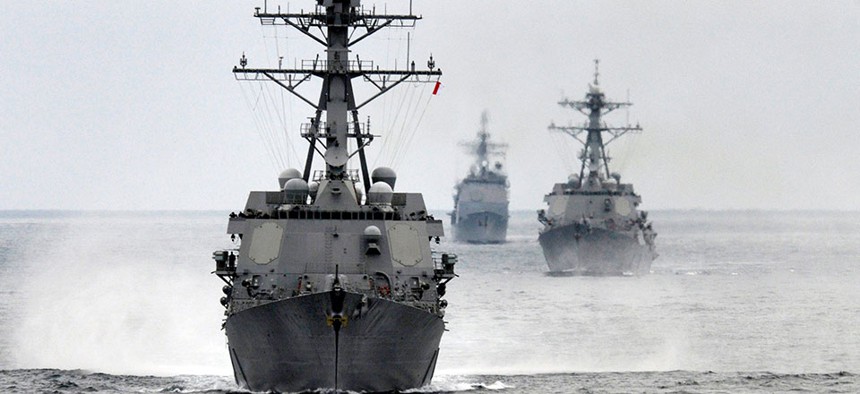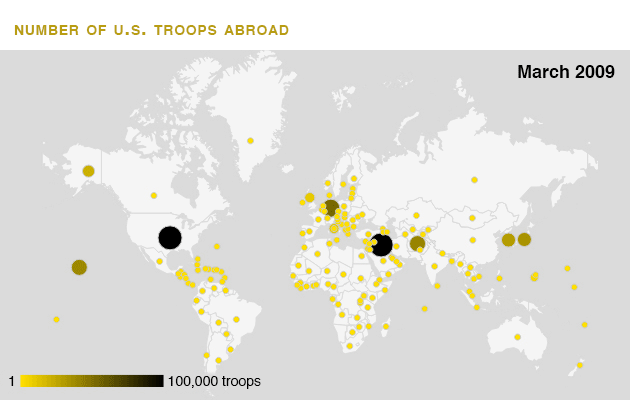
The USS Stockdale and the USS Bunker Hill in the Pacific Ocean Department of Defense
This is What the Pivot Looks Like
The Pentagon’s pivot to Asia is underway, but threats still remain around the globe. By Chanin Knight and Kedar Pavgi
The Pentagon’s so-called “rebalance” to the Asia-Pacific region is happening, albeit slowly. Ever since former Secretary of State Hillary Clinton announced the plan to pivot in late 2011, --and the Iraq war and the Afghanistan surge ended --- the military has been busy shifting resources and personnel to old bases and new key hotspots in the Pacific. Prominent examples include the contingent of Marines training in Australia, negotiations for more U.S. troops in the Philippines, warship access to Vietnam’s Cam Ranh Bay, and the first of four Littoral Combat Ships to be stationed in Singapore.
Mapped out over time, personnel statistics pulled from the Defense Manpower Data Center from 2009, when the Iraq withdrawal began to take effect, through the end of 2012 reveal how the pivot actually looks.
Of course, a few noticeable trends emerge from the data. The number of troops located on Pacific bases has grown remarkably as war deployments have slowed. In Hawaii, for example, there were 39,000 troops in March 2009, and nearly 50,000 by the end of 2012. Similarly, the number of troops in Japan has ballooned from 34,554 in March 2009 to nearly 53,000 in December 2012. Still, even with an ongoing rebalance, thousands of troops remain in the Middle East -- including 15,000 in Kuwait -- and will continue to provide a massive presence in the region.
Check out the graphic below.





